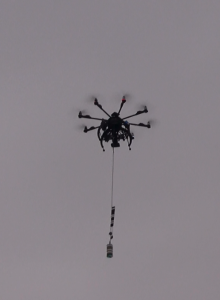Housing of carbon fibre
The housing of our sattellite is made of carbon, partly. We have used of the material in consideration of its durability and low cost. We have used the carbon fabric with the basis weight of 160g/m^2 and the epoxy resin Epidian 53 mixed with the TFF hardener with the voluminal ratio 1:10. As the “hoof” in our carbon tube, we have used the paperboard, which we have wrapped up in the Stretch.
LAMINATION
The photo shows the fabric during lamination process:
Next, we have wrapped up the tube with the Stretch very precisley and have faced with the adhesive tape in order to squeezed out the excess of resin form the carbon cloth
Such prepared tubes, we have left for 12 hours to dry
TREATMENT OF SEMI-PRODUCT
After 12 hours, we have dropped into the water, in order to take out easily “the hoof” in pieces.
Next, we have ground the tube with the abrasive paper of medium gradation. After that, the tube was laquered. After drying up of the last layer of varnish we started to grind it with the abrasive paper of gradation 800.
The consecutive work, it was polishing process of the tube with the abrasive compound, to give it good glare and perfect even surface
Final effect:
Weight: 31,55g
Inner diameter: 59mm
Wall thickness: 1mm




















